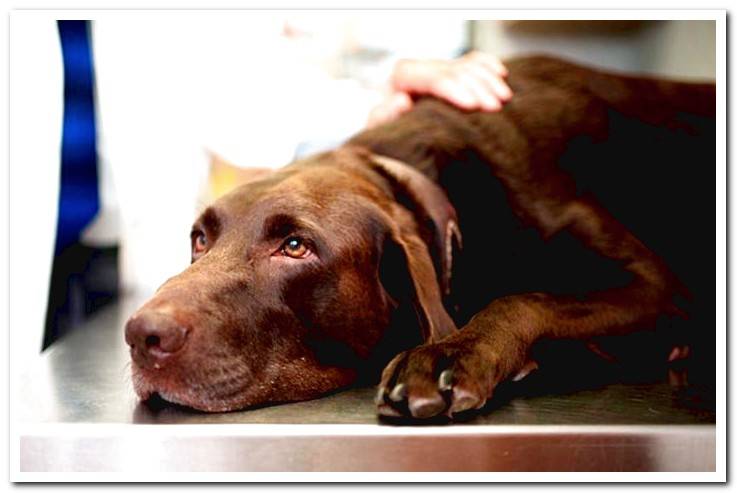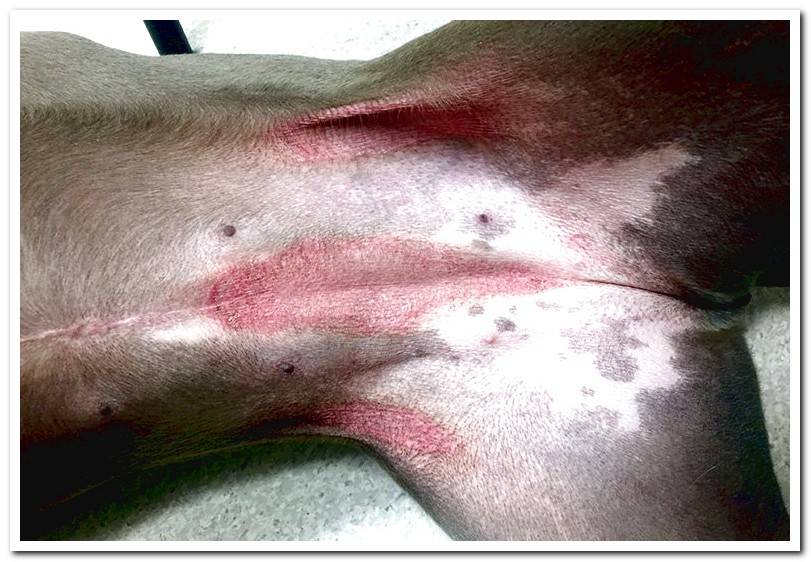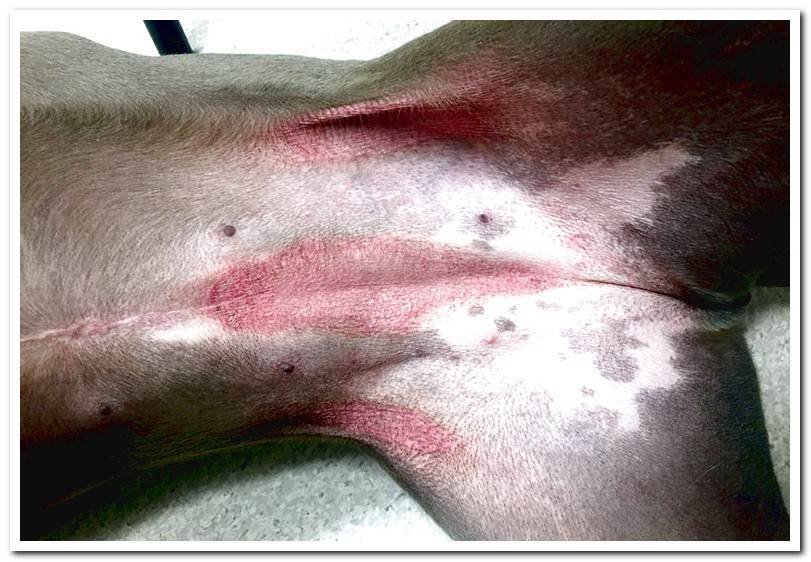
Atopic dermatitis, also known as canine atopy, is a disease that is increasingly diagnosed, especially in certain breeds. It is an allergic reaction that can occur to various substances.
It is practically impossible to avoid the contact of the dog with all the causes that provoke the reaction. But we can go to the vet to arrange a treatment that improves their quality of life. Immunotherapy stands out in this regard. Do you want to know more details? Let’s go there.
Index of contents
- 1 What is the atopic dermatitis?
- 2 Allergens for dogs
- 3 What races suffer from atopic dermatitis?
- 4 Symptoms of atopic dermatitis
- 5 How is atopic dermatitis diagnosed?
- 6 What is the treatment for atopic dermatitis?
- 6.1 Immunotherapy
- 7 Is atopic dermatitis contagious?
What is the atopic dermatitis?
Atopic dermatitis It is due to an allergic reaction. Specifically, the dog produces antibodies in response to contact, by inhalation or through the skin, with different substances called allergens.
In other words, the dog’s body overreacts to elements that, in principle, are not harmful. It is the second most common allergic skin disease. It is behind Flea Bite Allergic Dermatitis or DAPP.
Allergens for dogs
Although any substance is capable of triggering an allergic reaction, some are more frequently involved in atopic dermatitis. We can mention the following:
- Grass, grass or tree pollens.
- Wool.
- Powder.
- Mold.
- Feathers.
- Vegetal fibers.

What races suffer from atopic dermatitis?
As the tendency to suffer this type of allergic reaction is considered hereditary, it is possible to find some breeds more prone to atopy. They are the Golden and the Labrador retriever, the West Highland white terrier, the Poodle, the Bulldog or the Boxer. Furthermore, the largest number of affected dogs are between one and three years old.
Symptoms of atopic dermatitis
When the dog begins to suffer from atopic dermatitis will manifest symptoms only during the time of year in which the allergen is produced. For example, if you are allergic to tree pollens, you will suffer from dermatitis for only a few months. These will be different if the allergy is to grass pollens.
The problem is that it is common for these dogs to start reacting to a single allergen, but evolve to show symptoms with many others. This causes them to end up having atopic dermatitis throughout the year. Symptoms such as the following stand out:
- Itching, initially seasonal and, above all, in the ears and lower body.
- Sneezing, runny nose.
- Eye discharge
- Rubbing the face with the paws or against objects.
- Lick the legs that end up dying brown on the feet.
How is atopic dermatitis diagnosed?
The clinical picture of a dog with atopic dermatitis can be confused with that triggered by other diseases. For example, flea bite allergic dermatitis, sarcoptic or demodectic mange, food allergies, or some other skin conditions. Hence the importance of going to the vet to get a correct diagnosis.
In general, this professional comes to him considering the dog’s history. Sometimes it is necessary to collect skin samples and culture bacteria or fungi. Other times a hypoallergenic diet to rule out a food allergy. An external deworming schedule is also marked to eliminate fleas.
The confirmation method of atopic dermatitis is the so-called intradermal skin tests. They consist of inoculating small amounts of allergens to see if they produce any reaction in the area. The problem is its cost. Therefore, it is common to diagnose only on the basis of history. Serological tests can also be done.

What is the treatment for atopic dermatitis?
The first thing that is done is externally deworming. First in case the allergy were to fleas, but also because atopic dogs are also often allergic to fleas. Parasitosis would complicate the picture. It is important to know that the cure would be to completely prevent the dog from contacting the allergen or allergens.
This is almost impossible. It is common for several allergens to be involved in atopic dermatitis and not all of them can be avoided. Treatment is prescribed on a case-by-case basis. It focuses on reducing scratching and curing dermatological problems, such as infections or seborrhea. Antihistamines and corticosteroids are often prescribed.
These can be both systemic and local administration. Of course, only the vet can prescribe them. Essential fatty acids derived from fish oils can be incorporated into the diet. They have a beneficial effect on skin and hair. There are also shampoos specially formulated for dermatological injuries.
Immunotherapy
Immunotherapy it is a treatment aimed at helping the immune system. In the case of atopic dermatitis, dog hyposensitization is sought. In this way, it reacts less and less if it contacts the allergen.
It requires skin tests to detect which substances are the ones that trigger atopic dermatitis. Thereafter, custom vaccines are prepared and injected or administered under the tongue. It must be revaccinated for months.
The goal is to desensitize the dog by periodically subjecting it to exposure to very small amounts of the allergen. There will come a time when you will finally tolerate it. In this way a complete cure of atopic dermatitis could be achieved.
Is atopic dermatitis contagious?
Like any allergic reaction, atopic dermatitis is an individual reaction of the immune system of a certain dog that, therefore, cannot be spread to other animals or humans.
Yes we can see dogs from the same family affected, but in no case because they have been infected among them, but because of the hereditary component that is distinguished in this disease.
